Longtime readers will know that my all-time favourite story, in any style, is Washington Irving’s “The Legend of Sleepy Hole.” Not solely does it fee among the many tales I’ve annotated and illustrated, however I’ve completed deep dives into its historical past and even written my very own Sleepy Hole-inspired, fanfic ghost story. The lore behind this – which I’ve detailed in different posts and on our “About” web page – is that within the 90s, after I was a wee mite, my daycare unadvisedly confirmed us the long-lasting, Bing Crosby-narrated, 1949 Disney cartoon (it’s Disney, in any case, how may it’s traumatizing?).
Luckily for me, I used to be much less traumatized and extra magnetically obsessed: with out having the phrases to explain it on the time, I liked the story’s humorousness, coziness, creepiness, worldbuilding, and its themes of close-knit group, the facility of creativeness, and the perils of egotism and hubris.

(One in all my “Sleepy Hole” illustrations
My daycare instructor’s teenage son, Scott, heard about how a lot I loved the cartoon and he gifted me a $2 Walmart paperback of the story, with an afterward from Charles L. Grant, which he had simply completed studying for his English class for my mother to learn to me. I used to be hooked and the e book – my first of 40 or so – nonetheless has a outstanding place in my assortment.
I’ve by no means ceased loving the 1949 cartoon and I watch it yearly, however I naturally went on to look at as many animated and live-action diversifications as I may discover. Many are forgettable, some very enjoyable, and a few iconic. I turned obsessive about the grainy, made-for-TV Jeff Goldblum/Meg Foster/Dick Butkus model (its very cheapness really made it really feel creepier and extra genuine), and was surprisingly impressed with the loving constancy of Hallmark’s oft-panned Brent Carver/Rachelle Levefre/Paul Lemelin manufacturing (which – like one other favourite film of mine, “The Village” – suffered extra from over-hyped horror advertising and marketing than unhealthy filmmaking).


I additionally deeply loved the spooky, “Sleepy Hole”-themed episodes of “Wishbone” and “Are You Afraid of the Darkish?” and – after I lastly mustered the braveness to look at it – discovered Tim Burton’s moody, Gothic, Hammer-inspired homage to be surprisingly pleasant and candy despite its savage gruesomeness. Then again, Kaley Cuoco and Nick Carter’s cringey 2004 slasher, “The Hole,” put me off my tea as did the hammy entry in Shelley Duvall’s “Tall Tales and Legends” (Ed Begley Jr./Beverly D’Angelo/Tim Thomerson) and the un-stomachable CGI mis-birth, “The Evening of the Headless Horseman.”


The most effective of all of those, nevertheless, by way of constancy, disquieting eeriness, and easy magnificence – the easiest way to soak up the temper, setting, and themes of Irving’s unique story (and the most effective likelihood you’ll ever have of time-traveling again to 1790s Tarrytown and squirming alongside Ichabod Crane at a hearthside rendition of the story of the Galloping Hessian of the Hole) – is Rabbit Ears’ 1988, Glenn Shut-narrated, 26-minute cartoon.
Sporting a 9.6 on IMDB, I do know that I’m not the one one to foster a heat opinion on its high quality, however because it comes up so occasionally in discussions of Irving diversifications (and since I’ve by no means met one other one that has seen it earlier than I’ve beneficial it) I intention to dedicate this complete submit to advancing the trigger that Rabbit Ears’ half-hour, 2D, motion-comics-animation model of “The Legend of Sleepy Hole” set the gold customary by way of inventive magnificence, constancy to the textual content, and disquieting eeriness, and has not been outdone since.
Starting with “The Velveteen Rabbit” and “The Ugly Duckling” in 1985, Rabbit Ears Productions was an animation firm that produced high-quality diversifications of traditional youngsters’s literature, folklore, and fairy tales in half-hour episodes. Every story was narrated by a celeb actor or musician like Robin Williams, Meryl Streep, Michael Caine, Amy Grant, John Gielgud, Jeremy Irons, and Meg Ryan. The expressive illustrations from their tie-in books had been then delivered to life in the identical restricted however oddly hypnotic, “movement comics” fashion of animation related to “Studying Rainbow,” “Vooks,” and “Weston Woods.”
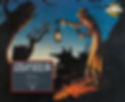
Every episode was a collaboration between a singular narrator, illustrator, director, and composer, and so they diversified in temper, tone, and magnificence relying on the subject material. They had been universally praised by critics, incomes two Grammys, 18 Grammy nominations, 21 Mother and father’ Alternative Awards, and The Humanitas Prize amongst others. After I was a child in the course of the 90s, these beloved diversifications – the likes of “Pecos Invoice,” “King Midas,” “How the Rhinoceros Obtained His Pores and skin,” “Rumpelstiltskin,” “Anansi,” and “The Steadfast Tin Soldier” – had been a ubiquitous supply of leisure in elementary faculty school rooms and libraries.
The “Legend of Sleepy Hole” episode – narrated by Glenn Shut with artwork from Robert Van Nutt and a rating by Tim Story – got here three years into their run and was directed by C. W. Rogers.

ROBERT VAN NUTT’S LUSCIOUS, VISUAL ART
In the end, the genius behind the final imaginative and prescient of this work is the person who wrote the screenplay and painted the illustrations – Robert Van Nutt. His succulent brushwork is thought round my family in different capacities as effectively: he illustrated two vacation, youngsters’s books written by his spouse, Julia (“A Cobtown Christmas” and “Pumpkins from the Sky?”), and a gorgeously broody biography of Charlotte Bronte (after whom my daughter is partly named).
He additionally did the illustrations for 3 extra – very wonderful – Rabbit Ears storybooks/cartoons, every of which is lovingly executed in a unique fashion specific to the supply materials: “The Emperor’s New Garments” (gorgeously completed within the method of the seventeenth century Dutch and French Rococo masters), “The Ugly Duckling” (following the mild fashion of Victorian animal artwork), “The Firebird” (within the vivid method of Russian folks artwork), “The Savior is Born” (following the gleaming mosaics of stained glass home windows), and “The Emperor and the Nightingale” (within the elegant custom of Chinese language parchments).
For “The Legend of Sleepy Hole,” the fashion of artwork is as soon as once more distinctive to this cartoon, by no means once more copied in any work of Nutt’s which I’ve seen. It’s lovingly modeled after the folks artwork and colonial-era portraiture of northeastern America between the 1750s and 1850s. Considerably flat, easy, and clearly outlined with stark colours and a clear, clear highlights that echo the similarly-naïve fashion (used within the sense of “rustic and folksy”) of Grant Wooden, these richly coloured work ruminate on daylight and shadows, candlelight and gloom. Van Nutt’s genius for depicting low mild is used to sensible impact in what’s, in any case a narrative concerning the hazy, liminal middle-ground between the creativeness and actuality.

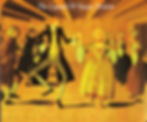
(I am not proficient sufficient at Photoshop to take away these white watermarks that one other uploader affixed to a number of the following photographs, so please think about them away, haha)
The vivid colours of the daytime sequences think of early American tableaux of rural wealth and abundance, reminding considered one of Thanksgiving as a lot as Halloween. Toasty tones of gold, inexperienced, brown, orange, and crimson dominate right here, all in opposition to a backdrop of electrical blue skies – simply as in autumn – whereas the nighttime sequences are devoured in a cool, cadaverous palette of pale blue, furious purple, bruise-toned brown, and midnight black.
There’s a lot of New England portraiture right here in his vivid, detailed depiction of individuals, in addition to Pennsylvania Dutch landscapes, with their flat, opaque brushwork, clear silhouettes, and straight-on, 2D dimensions. His particularly flat-painted flashback of the Headless Horseman – completed in twilit colours of “haint blue” and navy – suggests each colonial needlepoint and headstone artwork, full with skeletal angels.


He proves notably adept – on the story’s climax – at precisely depicting twilight and lantern-light (particularly the scene at Wiley’s Swamp which reminds us how nightfall can really feel weirdly vibrant and impenetrably darkish on the similar time). No single adaptation that I’ve ever seen has ever gotten the creepy, brown ambient lighting of strolling dwelling at evening fairly proper: it’s both too darkish (Jeff Goldblum model) or too vibrant (Hallmark), however Van Nutt’s climactic journey blends mild and darkish right into a crepuscular feast for the eyes, taking care to depart his Horseman enigmatic as a coal-black silhouette, whereas his goonish pumpkin-head glows like a hellish, crimson brimstone on the pommel of his saddle.

FAITHFULNESS TO WASHINGTON IRVING’S
Like most literary works tailored to display, “The Legend of Sleepy Hole” has been handled with various levels of constancy. As a result of comprehensible temptation to elaborate on its Gothic components, most diversifications have veered away – for higher or worse – from suggestive eeriness and into aggressive gruesomeness (Tim Burton, “The Hole,” the Fox TV sequence).
Others have made dramatic adjustments to the characterization or the core motives of the characters, normally making the superstitious, gluttonous, grotesque, social climbing rustic right into a skeptical, ascetic, beefcake, romantic cosmopolitan (Tim Burton, Jeff Goldblum, the Fox sequence), and vilifying Brom Bones as a philistine, bone-headed bully, moderately than the brusque-but-protective champion of Sleepy Hole.
Some have been surprisingly attuned to Irving’s unique plot and temper (Hallmark, Wishbone, Shelley Duvall, Will Rogers), however even these – once more, for higher or worse, once more – have taken drastic liberties with the story. However if you wish to see “The Legend of Sleepy Hole” as Irving wrote it, there may be one clear exemplar.
Robert Van Nutt’s screenplay and art work mix to craft an expertise that relishes moderately than shies away from Irving’s work. It does, maybe, flip the dial up a bit on the spookiness, however with out including any extreme schlock, gore, or horror. It’s creepy – like Irving’s unique – on its personal deserves. Extra to the purpose, Van Nutt delights in preserving the small particulars of the story, particularly ones which might be genuinely intriguing however are sometimes forgotten should you haven’t not too long ago learn it.
Few if some other variations take the time to recollect:
-
the spellcasting Indian chieftain,
-
the skin-crawling ghost story of the Girl in White,
-
the Horseman’s Revolutionary Warfare backstory,
-
the creepy-sounding-but-historical settings of Raven Rock and Wiley’s Swamp,
-
the nerve-racking lack of Gunpowder’s saddle,
-
Ichabod’s flirtatious behavior of loitering within the graveyard to select grapes with the women,
-
his shut relationship with the outdated Dutch wives,
-
and his frightful walks dwelling on winter nights.
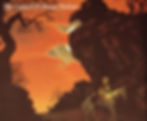
There are just a few detractions from canon:
-
Brom, Ichabod, and Katrina’s characters are fleshed out a bit by giving them unique dialogue (although that is all in step with Irving’s descriptions of their habits).
-
Hans Van Ripper is (understandably) conflated with Brouwer and the farmer who visits New York.
-
The story of Main Andre is omitted (although Andre’s Tree is implied to be the one groaning simply earlier than Raven Rock, which takes its place within the story as a landmark).
-
Katrina’s dismissal isn’t described and even implied.
Nonetheless, none of those overtake the good points made by Van Nutt’s dedication to preserving the minute particulars within the textual content – particulars which, as we are going to see subsequent, are additionally expressed within the painstaking care he invested in researching and executing the cartoon’s visible artwork.
FAITHFULNESS TO POST-REVOLUTIONARY
The historical past of the Lengthy Eighteenth Century (ca. 1680s – 1820s) is a aspect ardour of mine, and I’ve all the time liked this period of dynamic change, dramatic wars, and doomed optimism that features so many desirable figures: pirates and philosophers, revolutionaries and dignitaries, romantics and polymaths, Tories and Whigs.
So typically diversifications of “Sleepy Hole” turn out to be embarrassingly lazy about researching the fabric tradition of the period Irving depicted (the post-Revolutionary interval, circa 1790 – 1810): structure, props, and costumes are normally vaaaaguely Georgian, although typically Regency, typically Victorian, and infrequently outright Amish, and the Headless Horseman is normally depicted both as a leather-clad, Nazi dominatrix (Tim Burton), a bobbing model (Jeff Goldblum), or some sort of garish, sixteenth century Spanish cavalier in a silk doublet and ruff (Hallmark). Maybe you can accuse Robert Van Nutt of many issues (I can’t think about what!) however slacking on his analysis is certainly not considered one of them.
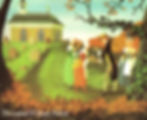
The loving, lavish element he has gone into far exceeds expectations: he researched what males wore, what girls wore, what youngsters wore, what working-class males and working-class girls wore, what Hessian troopers wore, and what nation coquettes, spoiled urchins, and city drunks wore. He researched what they ate and the way it was offered, how they farmed, what barns regarded like (not crimson with gambrel roofs, by the way in which), what homes regarded like (he particularly used the native Van Cortlandt Manor because the mannequin essentially the most convincing Van Tassel Manor I’ve ever seen), and the way folks smoked.
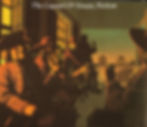
His consideration to element in Katrina’s garments, jewellery, and hair (which Irving vexingly describes as a mix of old style and fashionable kinds) is especially spot on, as is his remedy of Brom as an athletic, rural sportsman (he even will get the fox-tail cap proper), and Ichabod’s unmistakably New England (viz., influenced by British trend) excessive collar, double-breasted waistcoat, and beaver hat.
Van Nutt continues to be one of many solely animators I do know to depict the Headless Horseman in an genuine Hessian uniform (even the ghost’s colorless silhouette belies the broader sleeve-cuff of early Revolutionary Warfare regimentals), and the way in which he faithfully depicts the seventeenth century Outdated Dutch Church, the colonial-style tombstones of the Outdated Burying Floor, and the unique, white-washed bridge is incredible and commendable.

When it comes to accuracy, there are only some minor missteps: the blue, white-laced uniform depicted is of a grenadier colonel as a substitute of the inexperienced, red-trimmed jacket of a Jaeger trooper (aka, a chasseur or mounted ranger) and Ichabod is proven driving north-to-south as a substitute of vice-versa, with the bridge crossing in entrance of the church (because it does immediately) as a substitute of a number of hundred toes to its rear because it did in 1790.
The one apparent, outright anachronism is that jack o’lanterns weren’t utilized in America till the 1840s or so, after which solely by Irish Catholics, actually not the Calvinist Dutch. However Van Nutt’s delightfully distinctive, classic pumpkins – particularly the Horseman’s with its unhinged eyes and long-toothed grin – are fantastically classic (and I’ve copied them when carving my very own Halloween pumpkins in all probability 4 or 5 instances!) I point out these few objects to be thorough, however they’re in the end very small issues.

By watching this straightforward cartoon, you’ll get the closest feeling of what it could have been prefer to tarry in post-war Sleepy Hole. I’ve by no means discovered one other e book or film that even comes near this degree of high quality analysis and trustworthy copy.
TIM STORY’S HAUNTING, GRAMMY-WINNING
Although I’ve by no means met him, ambient musician and sound artist Tim Story is an outdated buddy household of mine: his music steadily seems on ambient, vacation, or New Age compilations from Windham Hill Information, together with considered one of my favourite instrumental Christmas albums, “Winter Solstice: Silver Anniversary Version.” Certainly, Windham Hill and their squadrons of synth, piano, chamber music, and acoustic guitar musicians dealt with all of the Rabbit Ears soundtracks up till 1990. Story’s synth music gorgeously blends conventional music with the nostalgic, wistful simplicity of 80s keyboard work.
As critic Linda Kohanov observes:
“His intimate fashion thrives on cavernous areas… Story units the contours of his items with broad synthesized brushstrokes in hazy, enigmatic veils of coloration… [H]e… injects a profound sense of ambiguity into his compositions, suggesting feelings for which there aren’t any phrases.”
It’s no shock, then, that the Grammy-winning soundtrack for “Sleepy Hole” is dominated by this expansive, delicate moodiness.
Though it’s at instances playful, cheery, and comedian, essentially the most haunting tracks worm into your creativeness with emotions of thriller and dread. Though the rating was nominated for a Grammy, it has by no means – as far as I’m conscious – been launched in particular person tracks (in the future I’d like to isolate them and have a little bit home-made album of my very own to hearken to whereas I’m studying or writing ghost tales), so I’ll give the themes my very own advert hoc titles for simplicity.
-
The “Opening Credit” theme (00:25) begins the movie with a way of foreboding and marvel: two long-sustaining piano notes within the bass vary drone ominously underneath a plaintive melody excessive up within the soprano vary, which descends mistily till the bass notes name again to it, and the melody repeats itself. There’s a sense that it describes two forces inextricably drawn collectively in a disquieting future – perchance the bold however insecure schoolmaster and his patiently ready, shadowy adversary. I completely love this temporary, easy tune.
Later we meet the primary characters, musically:
-
“Sleepy Hole” (2:00; 7:15; 21:08) introduces the mysterious setting of the story – a personality in its personal proper – with tender, playful chimes that plink out a mystical, drowsy, lullaby as Shut tells of the dozy however cussed valley and its purported enchantment by an Indian shaman. The mild theme repeats when Ichabod first visits the Van Tassel farm and as soon as extra when Ichabod’s disappearance is cautiously investigated.
-
“Ichabod” (3:10) is a cautiously optimistic tune performed warmly on a harpsichord, wiggling forwards and backwards like a person attempting to politely however determinedly nudge his manner by a crowd. It strikes me as fascinating that Story selected a nervously hopeful-sounding theme as a substitute of the standard bumbling, awkward comedian tune: I believe he treats Ichabod’s aspirations with kindness.
-
“Brom Bones” (9:09) is a triumphant fanfare proudly performed on unapologetic, unyielding looking horns amidst bellicose flurries of the kettle-drums.
-
The resonant, piano motif “Katrina” (8:09; 24:17) – deeply haunting despite its honey-golden, main sound – is gorgeous however mysterious. It’s mainly product of up three notes (as if sounding out the syllables “Ka-tri-na” in a longing sigh), however they’re performed in delicately evasive chords that counsel a mirage or a imaginative and prescient: one thing longed for but unobtainable (certainly, it’s the last theme performed earlier than the credit, whereas Ichabod’s ghost is proven eternally fleeing the Headless Horseman).
Different, cheerier tunes capably present Irving’s attribute humorousness and goodwill:
-
The triumphant, horn-driven, chivalric march as Ichabod sallies forth to the celebration (11:58; 16:51)
-
The fiery fiddler’s double-stopped, rosin-crackling, foot-stomping jig (14:12),
-
A comic book translation of “Brom Bones” right into a reedy taunt, throughout a montage of his pranks (11:15).
After which there are the darkest components of the story – the place Story makes use of the eerie, inhuman nature of synth music to full impact.
-
“Ghost Tales” (5:30) begins with wintry, minor chords from a haunted calliope, earlier than it interweaves ghostly, choral wails with ominous bass drones just like “Opening Credit,” maybe to imitate the interaction between risk (what’s) and concern (what’s imagined).
-
“The Girl in White” theme makes use of the identical mixture of wistful calliope over a depressing, synth drone (15:10; 23:39). The pipe melody is vibrant however solemn like a hopeful funeral dirge, drifting up and round like blown snow. These mournful, icy tones in the end escalate in a excessive peal of prayerful organ music. It repeats when Ichabod’s personal tragic ghost story is instructed by his former associates, the outdated Dutch wives.
-
“Raven Rock / Wiley’s Swamp” (17:17) makes use of the identical haunted calliope a 3rd time, accenting the solemn, baritone hum of the drone with anxious excessive notes that sound like sharp, nervous breaths or the ominous sighs of the evening wind within the bushes excessive overhead.
-
Lastly, “The Headless Horseman” (19:05) burns with a relentless, buzzing electrical energy — just like the sound of blood pounding in your ears while you’re terrified — accented with an completely chilling, insect-like, metallic rattle at moments when the fear peaks. As they race for the bridge, kettle drums thunder out a grim cadance just like the pounding of hooves or Ichabod’s coronary heart.
GLENN CLOSE’S HUSHED, EMOTIONAL STORYTELLING
Lastly, there isn’t a query that Glenn Shut pulls all of this artistry collectively right into a cohesive package deal together with her moody, intimate narration. Advised in hushed tones as if you’re sitting collectively in a darkish yard round a smoldering hearth pit, oddly nervous of being overheard (by whom? Nobody else is on the market, watching you from the tangled tree-line simply past – proper?).
She shifts into completely different voices with typically humorous, typically jarring ease (the one which sticks with me is the outdated girl who tells the story of the headless horseman in a squeaky, toothless wheeze, notably when she delivers the road, “however they by no means discovered his head” — you may inform that she is smiling, as if in infantile amusement, on the misplaced member.
All through many of the story, Shut retains up this quiet, whispery perspective, gently and slowly mulling over every element with motherly endurance. However when she will get to the chase scene, out of the blue she opens up the throttle, and dives deeper into her throat, talking with Shakespearean volumes from her diaphragm she injects a determined vigor and hearth into her animated storytelling, which all speed up as much as the purpose the place she surprisingly screams the phrases “Ichabod tried to dodge, however too late – it hit him with an amazing CRASH!”
At this level, all 4 artists – director C. W. Rogers included – conspire to jolt the senses when (after the flickering pumpkin consumes and dissolves into the display) we’re proven six seconds of the strobing silhouette of a panicked, riderless horse galloping at full pace (quickly pulsing between a black horse on orange to an orange horse on black), bringing us again to the start the place we had been startled by this picture – which arrived with a thunderbolt sound – in response to Shut’s first, whispered phrases: “Do you consider in ghosts?”

My household and I watch this yearly. I first encountered it as a VHS at my native library after I was 5, and I watched and rewatched it till the VHS wore out a 12 months or two later, and was faraway from circulation. We weren’t reunited once more for fifteen years till I used to be in faculty and determined to look it up and purchase the DVD model. Since then I’ve proven it to in all probability 2,500 or so undergraduates in my English courses the place I sometimes used it for my mid-term tasks.
I’ve left increased schooling since then, however my mission continues, and I’d love you to present it an opportunity, particularly should you benefit from the traditional supply materials, old style Hallowe’en, American historical past, folks artwork, or 80s synth music – or should you merely like fantastically instructed tales that linger in your creativeness. As Glenn Shut asks us in her first, whispered phrases, “Do you consider in ghosts?” No matter the way you outline the time period “ghosts” – and it isn’t easy to do – I ponder what your reply can be and why.
As for me, I maintain that ultimately, every of us is actually haunted, and this specific brief movie has actually haunted me ever over the previous three many years after which some. I hope that it’s going to hang-out your private home some Hallowe’en.
You’ll be able to presently stream it on the Roku channel or Amazon…

